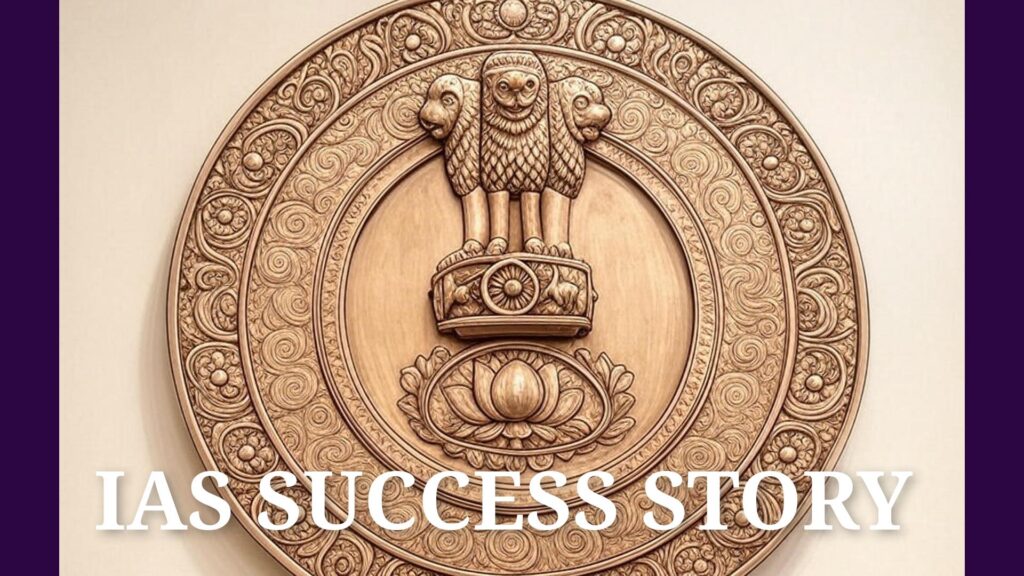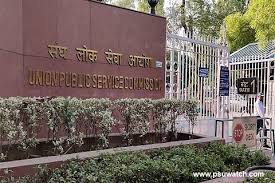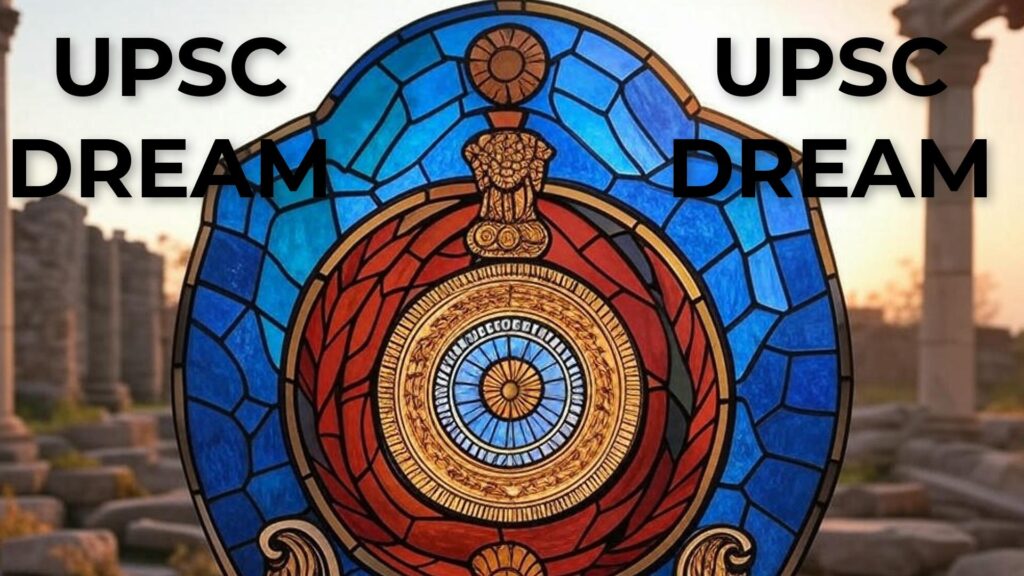In the heart of Rajasthan, where the sands whisper tales of ancient traditions and the air hums with the vibrancy of a rich cultural heritage, Dr. Anjali Rajoria stands as a beacon of change. A 2015-batch Indian Administrative Service (IAS) officer, Anjali has carved a unique path as a dynamic leader, blending her medical expertise, administrative acumen, and passion for social good to uplift the overlooked district of Pratapgarh. Today, she is spearheading a groundbreaking initiative to revive the centuries-old Mandana art, weaving it into the fabric of tourism, textiles, and merchandise. Through this ambitious project, she’s not only breathing new life into a fading tradition but also empowering local women artisans and positioning Pratapgarh as a thriving cultural hub.
READ ALSO = Biography of Laxminarayan Mishra, A Public Service and Infrastructure Development

Early Life and Education: A Foundation of Resilience and Purpose
Born into a family that valued education and service, Anjali Rajoria’s journey began with a deep-rooted desire to make a difference. Hailing from a modest background, she grew up witnessing the challenges faced by rural communities in India limited access to healthcare, education, and economic opportunities. These early experiences shaped her resolve to bridge these gaps. A brilliant student, Anjali pursued a medical education, earning her degree with distinction. Her time as a doctor exposed her to the stark realities of underserved regions, igniting a spark to address systemic issues beyond the confines of a clinic.
But Anjali’s ambitions stretched further. She set her sights on the prestigious Indian Administrative Service, a platform that would allow her to impact lives on a grand scale. In 2015, after rigorous preparation and unwavering determination, she cracked the UPSC exam, joining the IAS ranks as part of the Rajasthan cadre. Her dual expertise as a medico and an administrator would soon become her superpower, enabling her to tackle complex challenges with a rare blend of empathy and precision.
READ ALSO = What is Mandana Art ?A Detailed Case Study for the UPSC Exam
A Trailblazing Career: From Vision to Action
Anjali’s tenure as an IAS officer has been marked by innovation and a relentless focus on community-driven development. Her early postings in Rajasthan’s tribal belts, including Neemuch, showcased her ability to think outside the box. One of her standout initiatives, Mission Drishti, launched during her time in Pratapgarh, screened over 1.5 lakh students for vision impairments, providing spectacles, advanced treatments, and surgeries to hundreds. This program didn’t just restore eyesight it restored hope, dignity, and opportunity, proving Anjali’s knack for turning bold ideas into tangible outcomes.
Her transfer to Pratapgarh as District Collector in 2023 marked a turning point. Often overshadowed by Rajasthan’s more famous destinations like Jaipur and Udaipur, Pratapgarh was a hidden gem brimming with potential lush landscapes, historical treasures, and a vibrant artistic legacy. Anjali saw what others missed: a chance to transform this quiet district into a cultural and economic powerhouse. It was here that her vision for reviving Mandana art took root, a project that would soon capture national attention.

Reviving Mandana Art: A Cultural Renaissance
Mandana art, a traditional folk practice cherished by tribal communities in Rajasthan and Madhya Pradesh, is a stunning display of geometric patterns and symbolic motifs. Drawn on walls and floors with chalk powder and red ochre, these designs often depicting deities and nature carry spiritual significance, believed to ward off evil and usher in prosperity. Yet, like many indigenous crafts, Mandana was fading, its practitioners dwindling as younger generations migrated to cities for modern jobs.
Anjali recognized Mandana’s untapped potential not just as an art form, but as a catalyst for economic and cultural revival. She envisioned a multi-pronged approach: integrating Mandana into tourism, textiles, and merchandise to create a sustainable ecosystem that would uplift local artisans, particularly women. With her characteristic hands-on style, she dove into the project, collaborating with community leaders, artisans, and tourism experts to bring her vision to life.
Empowering Women Artisans
At the heart of Anjali’s initiative is the empowerment of Pratapgarh’s women. Historically, Mandana art has been a domain of female creativity, passed down through generations. Anjali saw an opportunity to harness this legacy. She organized workshops and training programs, equipping women artisans with modern tools and techniques while preserving the essence of their craft. These sessions didn’t just teach skills they built confidence, fostering a sense of pride and ownership among the women.
Under her leadership, self-help groups (SHGs) were formed, providing a platform for artisans to collaborate, innovate, and market their work. Anjali ensured fair wages and access to resources, breaking the cycle of exploitation that often plagues rural craftspeople. Today, these women are not just artists they’re entrepreneurs, their creations adorning homes, hotels, and boutiques far beyond Pratapgarh.

Tourism: Showcasing Pratapgarh’s Soul
Anjali’s vision extended beyond the art itself she wanted the world to experience it. She integrated Mandana into Pratapgarh’s tourism narrative, transforming villages into open-air galleries where visitors could witness live demonstrations, participate in workshops, and purchase authentic pieces. Strategic partnerships with travel agencies and the Rajasthan Tourism Board amplified her efforts, promoting Pratapgarh as a must-visit destination for culture enthusiasts.
A highlight of this push was the launch of a promotional film, a project she completed after taking over from her batchmate, IAS officer Inderjeet Yadav. Released on Republic Day, the film showcased Pratapgarh’s natural beauty and cultural treasures, with Mandana art as a starring feature. The response was overwhelming tourists began trickling in, drawn by the promise of an authentic, off-the-beaten-path experience.
ALSO READ : where the pulse of rural India meets the promise of progress, IAS officer Bharat Bastewad
Textiles and Merchandise: A Global Canvas
To ensure Mandana’s longevity, Anjali expanded its canvas to textiles and merchandise. She collaborated with designers to incorporate Mandana motifs into sarees, scarves, and home décor items like cushions and wall hangings. Local cooperatives were roped in to produce these goods, blending traditional methods with contemporary aesthetics. The result? A stunning collection that’s found buyers in India and abroad, from urban boutiques to international craft fairs.
Merchandise like Mandana-inspired stationery, tote bags, and souvenirs has also taken off, offering tourists a piece of Pratapgarh to take home. Anjali’s emphasis on quality and authenticity has earned the initiative accolades, with plans underway to secure a Geographical Indication (GI) tag for Mandana art—a move that would cement its status and protect its heritage.

Positioning Pratapgarh as a Cultural Hub
Through this initiative, Anjali is doing more than reviving an art form she’s redefining Pratapgarh’s identity. Once a sleepy district, it’s now buzzing with activity: artisan markets, cultural festivals, and tourist footfall are injecting life into the local economy. Small businesses, from homestays to eateries, are thriving, and the ripple effect is palpable. Pratapgarh is no longer just a dot on Rajasthan’s map it’s a cultural hub in the making, a testament to Anjali’s foresight and tenacity.
READ ALSO = Biography of Nishi Pandey, A IAS Officer Leading Maharashtra’s Small-Scale Industries to New Heights
Personal Traits: The Heart of a Leader
What sets Anjali apart is her ability to connect. Colleagues describe her as approachable yet resolute, a leader who listens as intently as she directs. Her medical background informs her empathy she sees people, not just policies. Whether she’s strategizing in a boardroom or chatting with artisans in a dusty village, Anjali brings warmth and purpose to every interaction. Her hands-on approach often seen inspecting project sites or brainstorming with her team reflects a work ethic that inspires those around her.

Challenges and Triumphs
The road hasn’t been easy. Skepticism from conservative communities, limited infrastructure, and funding constraints tested Anjali’s resolve. Yet, she turned obstacles into opportunities. By involving tribal elders and leveraging government schemes, she built trust. Mobile units and public-private partnerships filled resource gaps. Each hurdle overcome strengthened the initiative, proving that passion paired with pragmatism can move mountains.
READ ALSO = Prem Kumar Jha IFS, Odisha’s New Principal Chief Conservator of Forests (Wildlife)
The Legacy Ahead
As of April 2, 2025, Dr. Anjali Rajoria’s Mandana revival project is gaining momentum, with plans to scale up training, expand markets, and integrate technology for wider reach. Her work has earned her recognition as a changemaker, with whispers of national awards on the horizon. But for Anjali, the real reward lies in the smiles of the women she’s empowered and the pride in Pratapgarh’s eyes.
In a world racing toward modernity, Anjali Rajoria is a reminder that progress needn’t erase the past. Through her leadership, Mandana art is not just surviving it’s thriving, carrying Pratapgarh into a future where tradition and innovation dance hand in hand. Her story is one of grit, vision, and heart a legacy that will echo through Rajasthan’s sands for generations to come.

